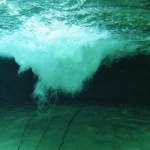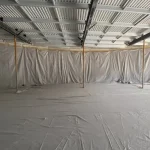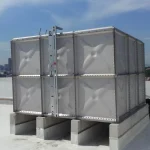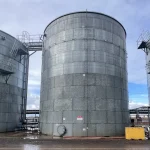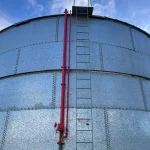In recent years, ROV inspections for tanks have transformed how asset owners maintain, repair, and certify their storage systems. By using remotely operated vehicles (ROVs) equipped with advanced cameras, lighting, and sensors, inspections can be carried out quickly, without draining tanks or putting personnel at risk. This method is particularly valuable for potable water tanks, fire water storage systems, chemical storage tanks, and industrial process tanks.
What Is an ROV Tank Inspection?
An ROV tank inspection involves deploying a small, manoeuvrable underwater drone inside a tank. Operated remotely from outside, the ROV captures high-resolution video and images, allowing inspectors to assess the tank’s internal condition in real time. Some units are also fitted with ultrasonic thickness gauges, enabling measurement of steel or other material thickness without physical contact.
Unlike traditional inspection methods, there is no need for confined space entry, no complete water drainage, and no prolonged downtime — making ROV inspections one of the most efficient solutions available today.
Why Choose ROV Inspections for Your Tank?
Enhanced Safety:
- Eliminates the need for personnel to enter hazardous or oxygen-deficient environments.
- Complies with Australian confined space entry regulations and safety protocols.
Operational Efficiency:
- Tanks remain in service during inspection.
- No water loss or costly operational shutdowns.
Detailed Reporting:
- High-definition footage captures every surface and joint.
- Damage, corrosion, and leaks are documented for repair planning.
Cost Savings:
- Reduced labour costs and preparation time.
- Avoids expensive draining and refilling procedures.
ROV Tank Inspection Process
- Pre-Inspection Planning: A qualified inspection team assesses the tank’s size, purpose, and access points to determine the right ROV equipment.
- ROV Deployment: The ROV is lowered into the tank through a hatch or manway, equipped with lighting to work in dark, submerged conditions.
- Comprehensive Internal Survey: The operator remotely navigates the ROV along the tank floor, walls, roof structure, and fittings. Areas of concern — such as corrosion, scaling, liner damage, or sediment accumulation — are documented.
- Data Capture & Analysis: Video, photographs, and sensor readings are recorded for later analysis. If ultrasonic thickness measurements are taken, they are added to the final inspection report.
- Reporting & Recommendations: Clients receive a detailed report with annotated images, findings, and repair or maintenance recommendations.
Applications Across Different Tank Types
- Potable Water Tanks.
- Fire Water Storage Tanks.
- Industrial and Chemical Storage Tanks.
- Marine & Offshore Tanks.
When to Schedule an ROV Tank Inspection
- Annual or scheduled maintenance inspections.
- Post-repair verification to confirm successful refurbishment or relining.
- Leak detection without draining the tank.
- Sediment build-up assessment.
- Pre-purchase inspections for second-hand tanks or industrial assets.
As ROV technology continues to advance, we can expect even more capabilities — from AI-powered defect detection to 3D mapping of tank interiors. For asset managers, this means faster, safer, and more accurate maintenance planningwithout unnecessary disruption.

Conclusion
Whether for potable water, fire protection, or industrial use, Underwater ROV Tank Inspection are a modern, safe, and cost-efficient way to ensure structural integrity and compliance. By adopting this technology, you protect your assets, maintain operational efficiency, and reduce risks for inspection crews.
Contact Tank Liners Sydney by Raven Tanks Australia today at 1800 770 899

